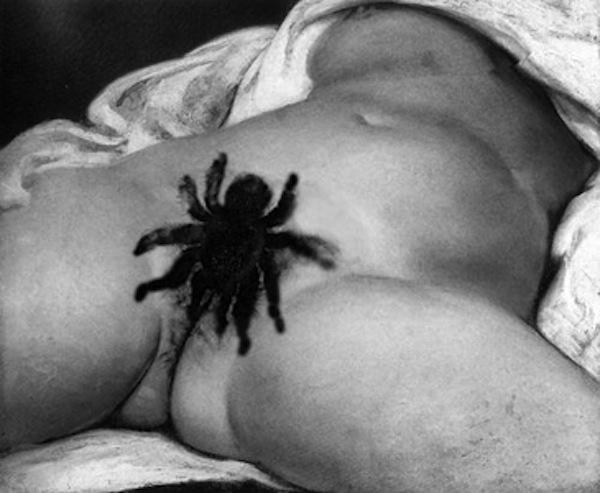Rosemarie Trockel is an artist who enjoys experimenting with many different styles. In her retrospective exhibition titled ‘A Cosmos’ she places her work in the company of others, mainly ‘Outsider Artists.’ The result is an exploration of varying disciplines. Central to the exhibition are a number of core works, including her logo blankets as well as new works never seen before in the UK. Trockel has arranged around these Neo- Surrealist artworks a constellation according to type and theme utilising artefacts, both natural and human combined with her .
A Cosmos reflects the artist’s interest in creating a space for ideas to exist between different disciplines, past and present. Many of the objects and artworks, selected by Trockel in dialogue with curator Lynne Cooke, produce a context for the artist’s work within other fields of inquiry, such as the natural sciences and natural history. Watercolours painted by the pioneering botanist Maria Sibylla Merian sit alongside intricate models of marine invertebrates crafted by Leopold and Rudolph Blaschka, initially used as research tools by naturalists who had no access to living specimens.
Works by self-taught artists, such as Judith Scott and James Castle, are presented in parallel with films, such as Władysław Starewicz’s early, pioneering stop-motion animation of 1912, The Cameraman’s Revenge. Trockel’s appreciation of such variously under-recognised objects and artists stems from her empathy both with the questions their work addresses, and with the directness and inventiveness with which they are realised. These artists provide models of dedication to their chosen field that, for Trockel, are exemplary and inspiring.
A Cosmos traces an historical lineage from the early cabinets of curiosities (the wunderkammer) to natural history and modern art museums through to the white cube of contemporary galleries. Within this framework there is a focus on the relationship between skill and craft, and the practices of self-taught and under-recognised artists, reflecting Trockel’s ongoing tendency to overturn traditional disciplinary categories. The objects that make up this cosmos offer a wealth of resonant relationships between different fields of knowledge and experience, proposing that we remain open to new discoveries.
For more than thirty years Trockel has resisted an identifiable style, working in a variety of materials, including wool, bronze and found objects, and a range of mediums, including photography, collage, video and assemblage. The constants of her wide-ranging practice include issues that have long occupied her thinking and that have underpinned her diverse activity, such as contrasting ideas of feminism as well as the divides constructed between amateur and professional, celebrity and anonymity, and the fine and applied arts. More broadly, through her works Trockel probes not only interrelationships between humans and animals but also our impact, as a species, on the natural world.
The subject of numerous solo shows, Trockel’s works have been exhibited widely, including at New Museum, New York; Museo Nacional Centro de Arte Reina Sofía, Madrid; Kunsthalle Zürich, Switzerland; Dia Center for the Arts, New York; Moderna Museet, Stockholm; Centre Pompidou, Paris and Whitechapel Gallery, London. Trockel represented Germany at the 1999 Venice Biennale and participated in Documenta in 1997 and 2012.
Rosemarie Trockel (born 1952 in Schwerte, Germany) has long been admired for her highly independent and influential practice. This exhibition is curated by Lynne Cooke and organised by the
Rosemarie Trockel is an artist who enjoys experimenting with various styles, yet ensures all her works are infused with a healthy dose of surrealism .
Her strange works vary from a cage full of motorised birds to a large dead crab sat atop a perspex case filled with textiles. On top of these enjoyable oddities, the central room is the dark heart of the exhibition containing disturbing imagery. Whether it’s a mother neglecting her baby while gazing over holiday snaps or a green leg in fishnets that looks decidedly reptilian.
Not all of her works hit the mark and her abstract wool ‘paintings’ get tedious very quickly. The first room containing book covers and adverts lacks cohesion.
Trockel is also a collector including works that are not her own but that fit in with the oeuvre of the exhibition. These include a set of jellyfish models delicately recreated using glass, on loan from the Natural History Museum. There is also a bizarrely brilliant stop motion animation by Wladyslaw Starewicz where a couple of anthropomorphised beetles conduct extramarital affairs to escape the tedium of their daily lives.
Image: Rosemarie Trockel Replace Me 2011 Digital print Private collection
© Rosemarie Trockel, DACS 2013Courtesy Sprüth Magers Berlin London

